APP Self-Guided Routes Ávila with Audioguide
Non-refundable - Your booking can not be cancelled, modified or refunded.
Guaranteed Lowest Prices - Find a lower price? We'll match it!
Highlights
- Explore the main square of Avila, Plaza Mercado Chico
- Visit the historical Convent and Museum of Santa Teresa
- Marvel at the beautiful architecture of the Cathedral of Avila
- Discover the Renaissance Tower of Los Guzmanes
- Experience the charm of the Jewish quarter in Avila
-
Self-guided audio tours
-
Duration: 10-12 hours
-
Available in 6 languages
-
Customizable routes
-
Includes Google Maps points
Immerse yourself in the rich history and culture of Ávila with the APP Self-Guided Routes. This innovative navigation app provides self-guided tours with audio guides, allowing you to explore Ávila at your own pace. From the stunning Plaza Mercado Chico to the Convento de Santa Teresa, you'll discover the city's most iconic landmarks and hidden gems. The app also offers routes by car and walking trails, ensuring you don't miss a single point of interest. Customize your own route with the web panel and access a repository of travel documents for an enhanced experience. With audio guides available in 6 languages, including Spanish and English, you'll learn fascinating facts and stories about each location. Don't miss the opportunity to unlock the secrets of Ávila with the APP Self-Guided Routes.
At a Glance
-
10 hours
-
Instant Confirmation
-
Available in English, Italian, French, German, Spanish; Castilian
-
Mobile voucher
-
Private Tour
-
Family friendly
Featured Reviews
Explore Ávila at your own pace with our self-guided audio tour app, featuring customizable routes and insights in multiple languages.
Included
-
Navigation APP that includes self-guided routes with all the points of interest in Ávila
Meeting Point
Ávila , Spain
End Point
Ávila , Spain
What to expect

The Plaza del Mercado Chico is the main square of the city of Avila, Spain. It is located in the center of the city, within the medieval walls. It is a rectangular square with arcades on three of its sides. It is oriented on the NE-SW axis, with the Town Hall on the NE side, and opposite the church of San Juan Bautista, on the side without arcades. The built sides of the square have three heights: a first with semicircular arches on pillars and two upper ones in which brick predominates. The square is surrounded by historic buildings, including the Town Hall, the Church of San Juan Bautista, the Palacio de los Verdugo and the Palacio de los Águilas.
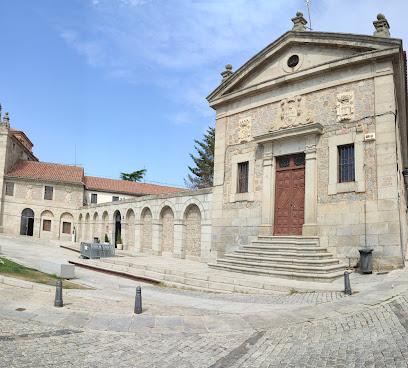
The Convent and Museum of Santa Teresa is a historical complex located in the city of Ávila, Spain. The convent was founded in 1562 by Santa Teresa de Jesús, a Carmelite nun who reformed the order of Carmel. The museum was founded in 1957 and houses a collection of objects related to Santa Teresa and the history of the convent. The convent is located in the center of Ávila, within the medieval walls. The building is in the Renaissance style and consists of a church, a cloister and a series of cells and rooms. The church is the centerpiece of the convent and has a large Gothic vault. The cloister is an inner courtyard with stone columns and a central fountain. The museum is located inside the convent and houses a collection of objects related to Santa Teresa and the history of the convent.

The church was built in the 12th century and is dedicated to Saints Vicente, Sabina and Cristeta, Christian martyrs from the 4th century. The building has a Latin cross floor plan with three naves, a transept and an apse. The central nave is covered by a barrel vault, while the side naves are covered by groin vaults. The transept is covered by an octagonal dome. The western façade of the church is the most impressive. It is divided into three sections by pilasters with capitals decorated with plant and animal motifs.

The Puerta del Alcázar is one of the access gates to the walled city of Ávila, in Spain. It is located on the west side of the walls, near the Cathedral of Ávila. The gate was built in the 12th century, during the reign of Alfonso VI of León. It is one of the oldest and best preserved gates in the walls of Ávila. The door is Romanesque in style and has a horseshoe arch shape. It is flanked by two cylindrical towers 20 meters high. The towers are linked by a vaulted bridge that crosses the moat that surrounds the walls. The door is decorated with sculptures of animals and biblical characters. At the top of the gate is a statue of a Christian knight. The Puerta del Alcázar is an important place for the history and culture of Ávila. It is one of the most emblematic gates of the city and is a popular destination for tourists.
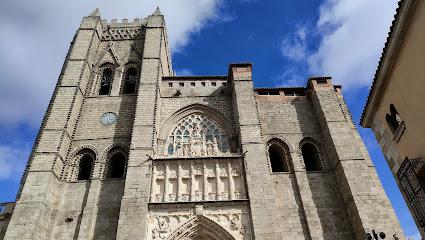
The Cathedral of Ávila is a temple of Catholic worship in the Spanish city of Ávila, episcopal seat of the same name, in Castilla y León. It was designed as a temple and fortress, its apse being one of the cubes of the city wall. It is considered the first Gothic cathedral in Spain, and is one of the best examples of this architectural style in the country. The cathedral was built in the 12th century, on the remains of a primitive Romanesque building. The construction was carried out in several phases, and was not completed until the 15th century.
Tower of Los Guzmanes
The Torreón de los Guzmanes is a Renaissance building located in the Spanish city of Ávila, Spain. It is one of the most beautiful noble houses in the city and is currently the headquarters of the Provincial Council of Ávila. The tower was built in the 16th century by order of Garcibáñez de Mújica, on top of another construction that previously belonged to Sancho del Águila. The building is in the Renaissance style and consists of a quadrangular tower, a Renaissance courtyard and a set of rooms. The tower is the most characteristic part of the building. It is 30 meters high and is crowned by an octagonal turret. The tower façade is decorated with Renaissance motifs, such as columns, medallions and shields.
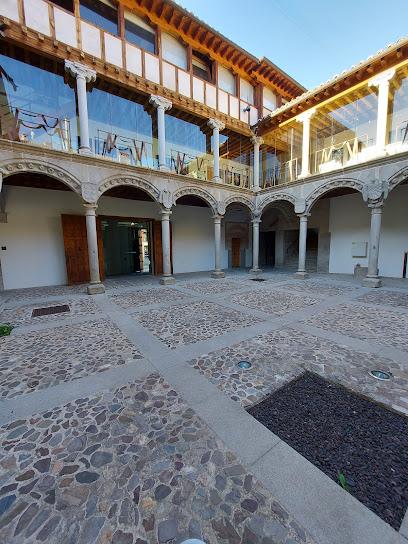
The building is Plateresque in style and consists of a Plateresque façade, an arcaded patio and a set of rooms. The façade is the most characteristic part of the building. It is divided into three sections by pilasters with capitals decorated with Plateresque motifs. In the center of the façade there is a main window decorated with grotesques. The porticoed courtyard is the centerpiece of the building. It has a square plan and is surrounded by a gallery of columns. The courtyard is decorated with a central fountain.
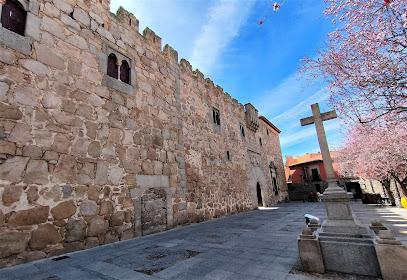
The Dávila Palace, also known as the Abrantes Palace, is a historic building located in the city of Ávila, Spain. It is one of the best examples of medieval architecture in Spain. The palace was built in the 14th century by order of Pedro Dávila y Zúñiga, first Marqués de las Navas and third Count of Risco. The building is made of the same material as the city wall, granite, and has a defensive structure with towers and barbicans. The palace is rectangular in plan and has two floors. The main façade is divided into three sections by pilasters. In the center of the façade there is a main window decorated with Gothic tracery.
Antigua Sinagoga del Lomo
The Jewish quarter of Ávila is located in the center of the city, within the medieval walls. The neighborhood is made up of a maze of narrow, winding streets, which are flanked by one-story stone houses. The neighborhood was founded in the 11th century and was an important center of Jewish life in Spain. The neighborhood was home to a synagogue, a cemetery, and a number of other Jewish institutions. In 1492, the Jews were expelled from Spain. The synagogue in the Jewish quarter of Ávila was converted into a church and the cemetery was abandoned.
San Vicente Garden
The Garden of San Vicente is a public park located in the Spanish city of Ávila, Castilla y León. It is located in the center of the city, next to the Basilica of San Vicente. The garden was created in the 20th century, on the old Roman cemetery of the city. The garden is made up of a set of terraces that descend from the Basilica of San Vicente to the city wall. The garden is full of trees and plants, and features a number of sculptures and monuments. Among the most outstanding sculptures are the sculptures of saints Vicente, Sabina and Cristeta, which are located on the upper terrace of the garden.
St. Peter's Church
The church was built in the 12th century and is located outside the city walls. The building has a Latin cross plan with three naves and three apses. The central nave is higher than the side naves and is covered with a barrel vault. The side naves are covered with groin vaults. The main façade of the church is in the Lombard Romanesque style. It is decorated with a set of blind arches, friezes of small arches and a series of sculptures. The main door of the church is decorated with a tympanum carved with a representation of Christ in Majesty.
Real Monasterio de Santa Ana
The Royal Monastery of Santa Ana is a monastery of Cistercian nuns located in the Spanish city of Ávila, capital of the homonymous province, in the autonomous community of Castilla y León. It was founded in 1350 on the initiative of Queen Maria of Portugal, wife of King Pedro I of Castile, and was dedicated to the education of the daughters of the nobility and the royal family. The monastery was completely rebuilt in the 16th century, following the canons of the Renaissance. The building consists of a church with a single nave with a barrel vault, a three-story cloister, a refectory and a chapter house.
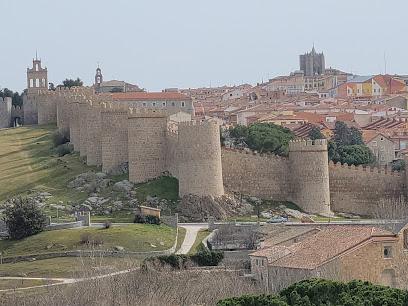
Los Cuatro Postes is a humilladero located in the city of Ávila, Spain. It is a religious monument built in 1566 that consists of four Doric columns five meters high on which four architraves with the city's coat of arms are supported. In the center of the square formed by the columns, on a base, stands a granite cross. The humilladero is located on the left bank of the Adaja River, overlooking the city from the west. It is a popular place for tourists and locals as it offers stunning views of the city.
The experience can be subject to change due to bad weather or unforseen circumstances. We always endeavour to give you the best possible experience.
Additional Information
-
Infants and small children can ride in a pram or stroller
-
Service animals allowed
-
Specialized infant seats are available
-
Suitable for all physical fitness levels
What our experts say
-
Start early to enjoy less crowds.
-
Visit the Plaza Mercado Chico for snacks.
-
Don't miss the stunning views from Los Cuatro Postes.
-
Consider dining at Casa de las Flores nearby.
-
Explore the Jewish Quarter for unique history.
More About this Experience
Introduction
The APP Self-Guided Routes in Avila is the ultimate tool for exploring and immersing yourself in the rich history and culture of this enchanting Spanish city. This navigation app offers self-guided routes with audio guides, allowing you to discover the hidden gems and iconic landmarks of Avila at your own pace. Whether you're a history enthusiast, a curious traveler, or simply someone seeking a unique and immersive experience, this app will provide you with all the essential information and context you need to make the most of your visit to Avila.What to expect?
With the APP Self-Guided Routes in Avila, you can expect a seamless and immersive experience that will bring the city's history and culture to life. The app offers a comprehensive selection of walking and driving routes, each carefully curated to highlight the most significant points of interest in Avila. As you navigate through the city, the audio guides will provide fascinating insights, stories, and historical facts, allowing you to truly understand and appreciate the significance of each location. From the majestic Avila Cathedral to the ancient city walls, you'll have the opportunity to explore Avila's iconic landmarks and uncover its hidden treasures.Who is this for?
The APP Self-Guided Routes in Avila is designed for all types of travelers. Whether you're a solo adventurer, a couple looking for a romantic getaway, or a family seeking an educational and fun experience, this app is perfect for you. History buffs will be captivated by the in-depth audio guides and the opportunity to explore Avila's historical sites at their own pace. Photography enthusiasts will find endless inspiration in the city's stunning architecture and picturesque streets. Even if you're simply looking for a unique and immersive way to discover a new destination, the APP Self-Guided Routes in Avila is the perfect companion.Why book this?
What sets the APP Self-Guided Routes in Avila apart from other travel apps is its comprehensive and user-friendly features. The app not only provides audio guides in multiple languages, but it also offers self-guided walking and driving routes, ensuring that you have the flexibility to explore Avila in the way that suits you best. The integration with Google Maps allows for easy navigation, while the geolocation feature ensures that you won't miss any of the city's hidden gems. Additionally, the access to the web panel allows you to customize your own route and serves as a repository of travel documents, making your journey even more personalized and convenient.Good to know
When using the APP Self-Guided Routes in Avila, it is important to have a fully charged smartphone or tablet with the app downloaded and ready to use. Make sure to bring comfortable walking shoes and dress appropriately for the weather, as you'll be exploring the city on foot. It's also a good idea to have a portable charger or power bank with you, as navigating through the app and using the audio guides may drain your device's battery. Don't forget to bring your headphones to fully enjoy the audio guides and immerse yourself in the history and stories of Avila.Reviews
Travelers who have used the APP Self-Guided Routes in Avila have praised its user-friendly interface and the wealth of information provided through the audio guides. Many have expressed how the app enhanced their experience and allowed them to truly appreciate the historical significance of Avila's landmarks. The ability to customize routes and access travel documents through the web panel has also been highly appreciated, as it provides a personalized touch to the journey. Overall, individuals who have purchased and used this app have reported high levels of satisfaction with its performance and have recommended it as a must-have tool for exploring Avila.This is a popular product and the date you are looking for just sold out. Next available date is



















